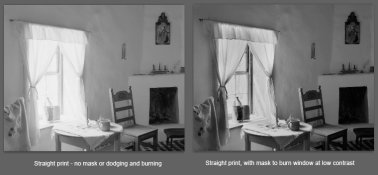jstraw
Member
That's a lot to unpack.
My interest is in creating silver gelatin prints. That's a personal choice. They are not intended to be understood as an objective representation of the physical world. The camera negative isn't a primary or an intermediate end. It's a tool used in furtherance of the production of the silver gelatin print. That's a personal choice. I choose to engage in a process that is analog and photo-chemical entirely, where the image is at no stage manipulated in a manner that employs computer algorithms. This also is a personal choice. I don't make that choice because doing otherwise would be a deception. The photograph is a subjective representation. Deception doesn't even enter into it as far as I'm concerned. I feel no contempt. It's just not how I choose to make images.
My interest is in creating silver gelatin prints. That's a personal choice. They are not intended to be understood as an objective representation of the physical world. The camera negative isn't a primary or an intermediate end. It's a tool used in furtherance of the production of the silver gelatin print. That's a personal choice. I choose to engage in a process that is analog and photo-chemical entirely, where the image is at no stage manipulated in a manner that employs computer algorithms. This also is a personal choice. I don't make that choice because doing otherwise would be a deception. The photograph is a subjective representation. Deception doesn't even enter into it as far as I'm concerned. I feel no contempt. It's just not how I choose to make images.











